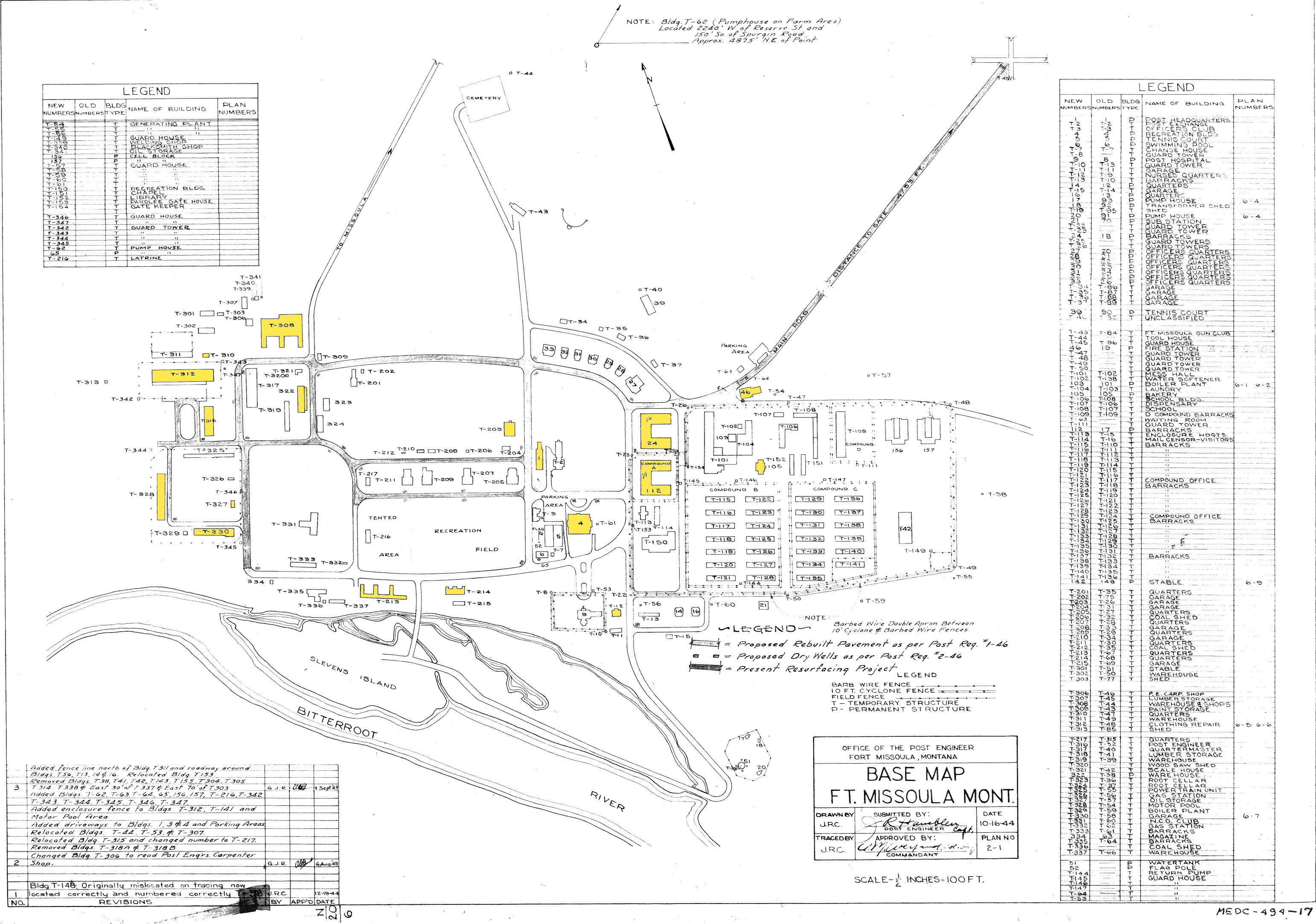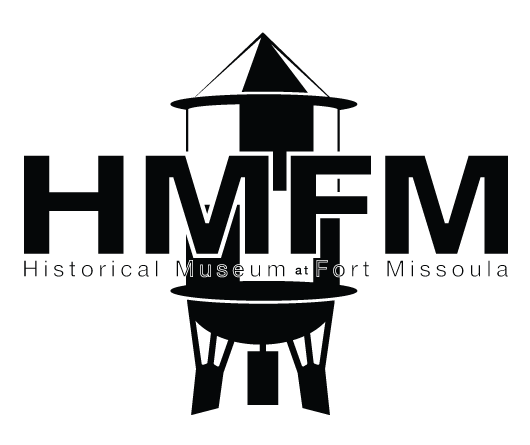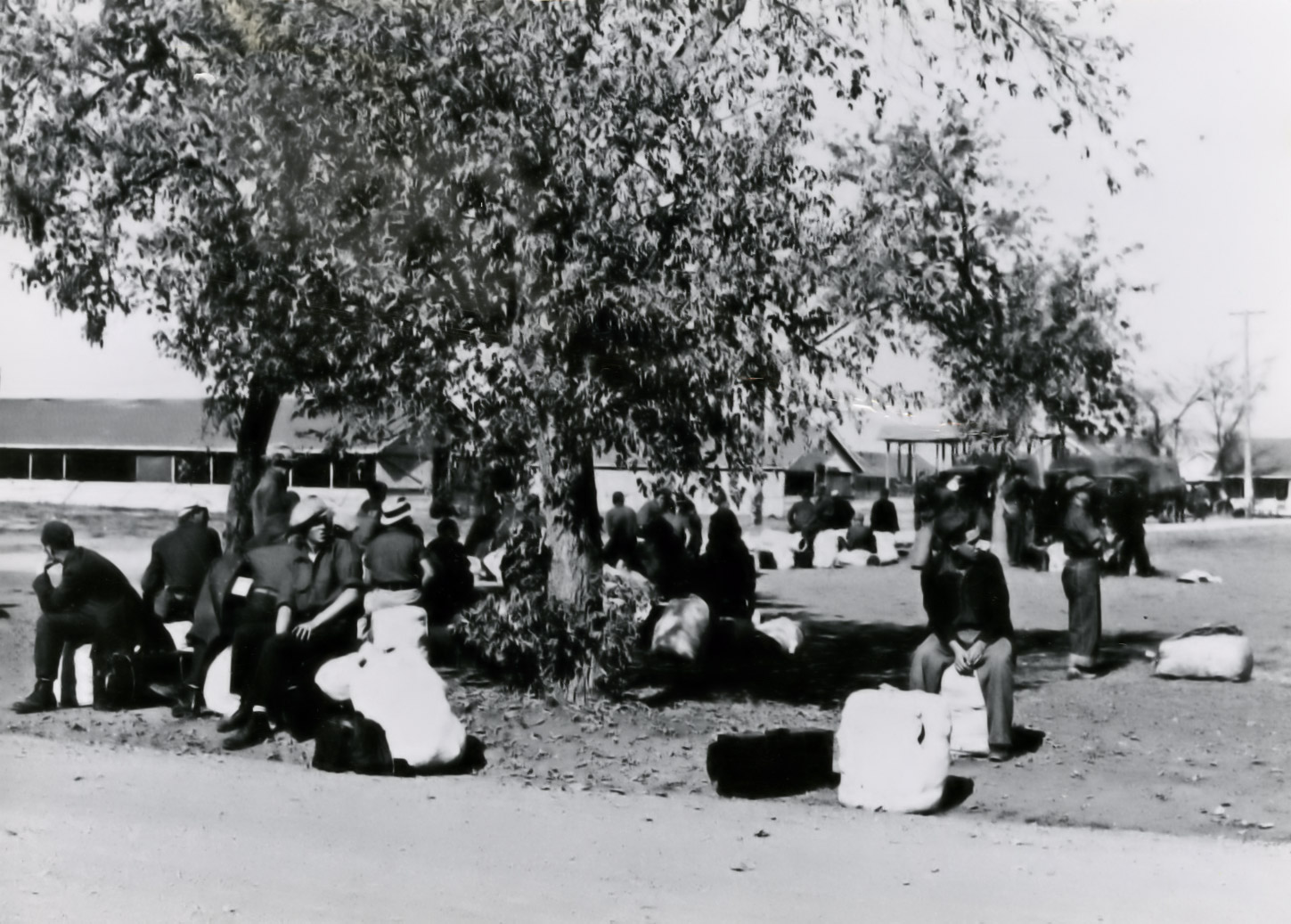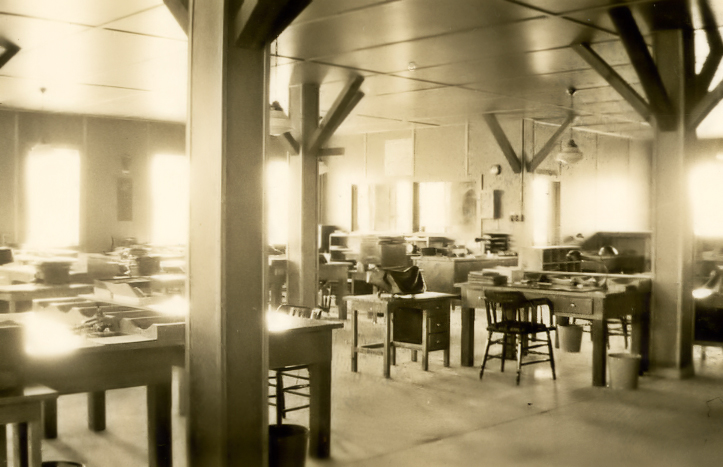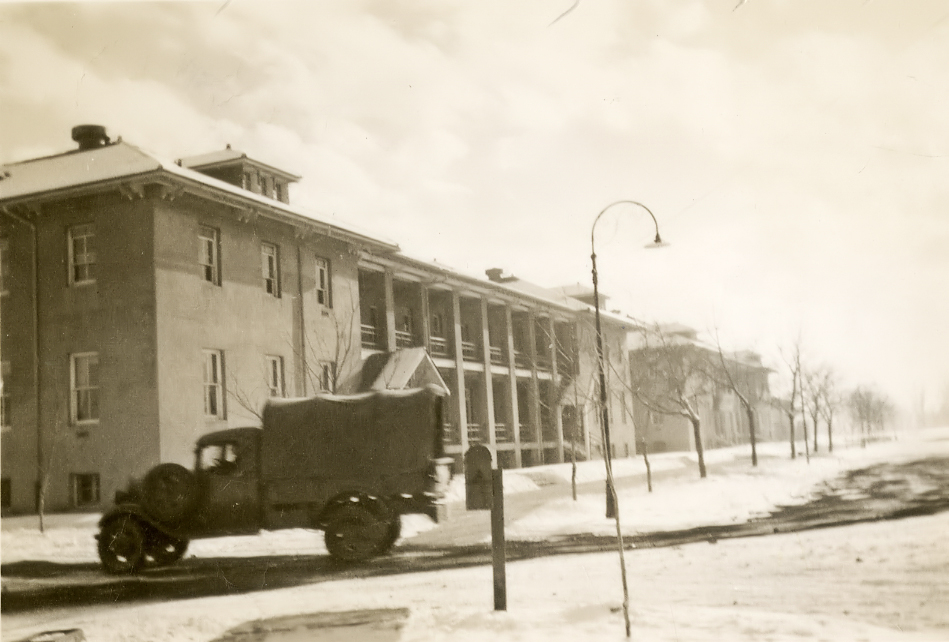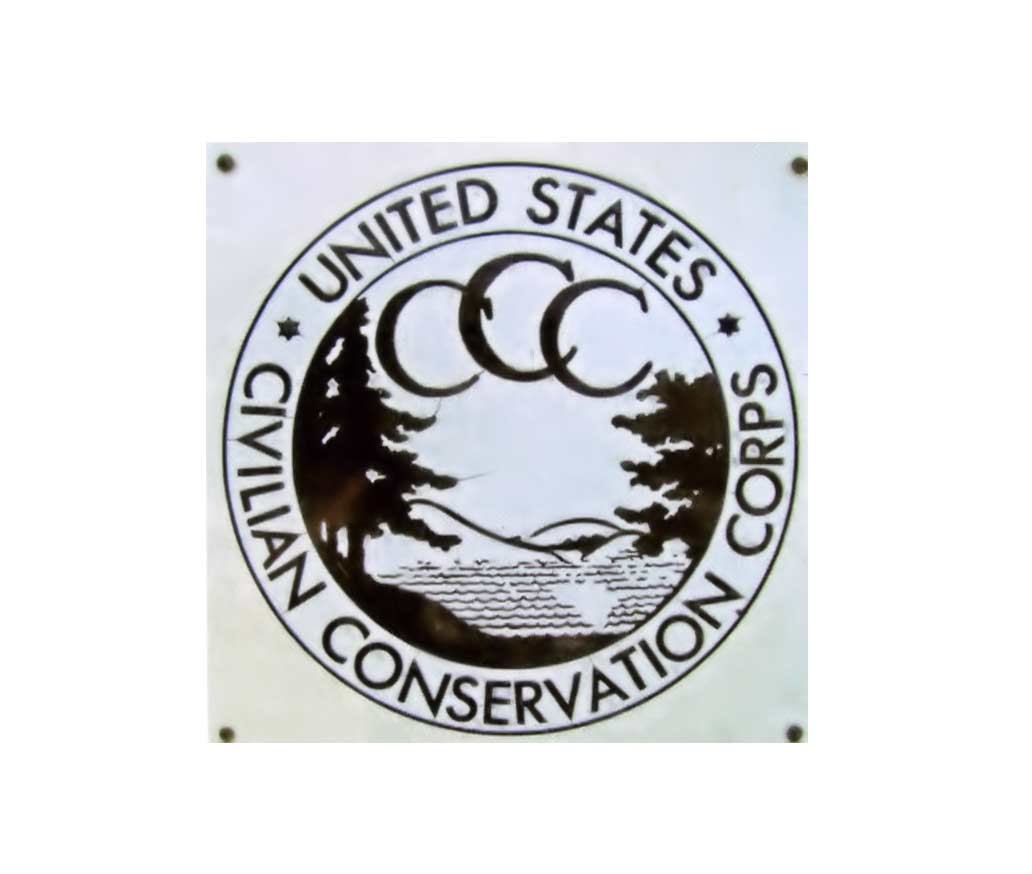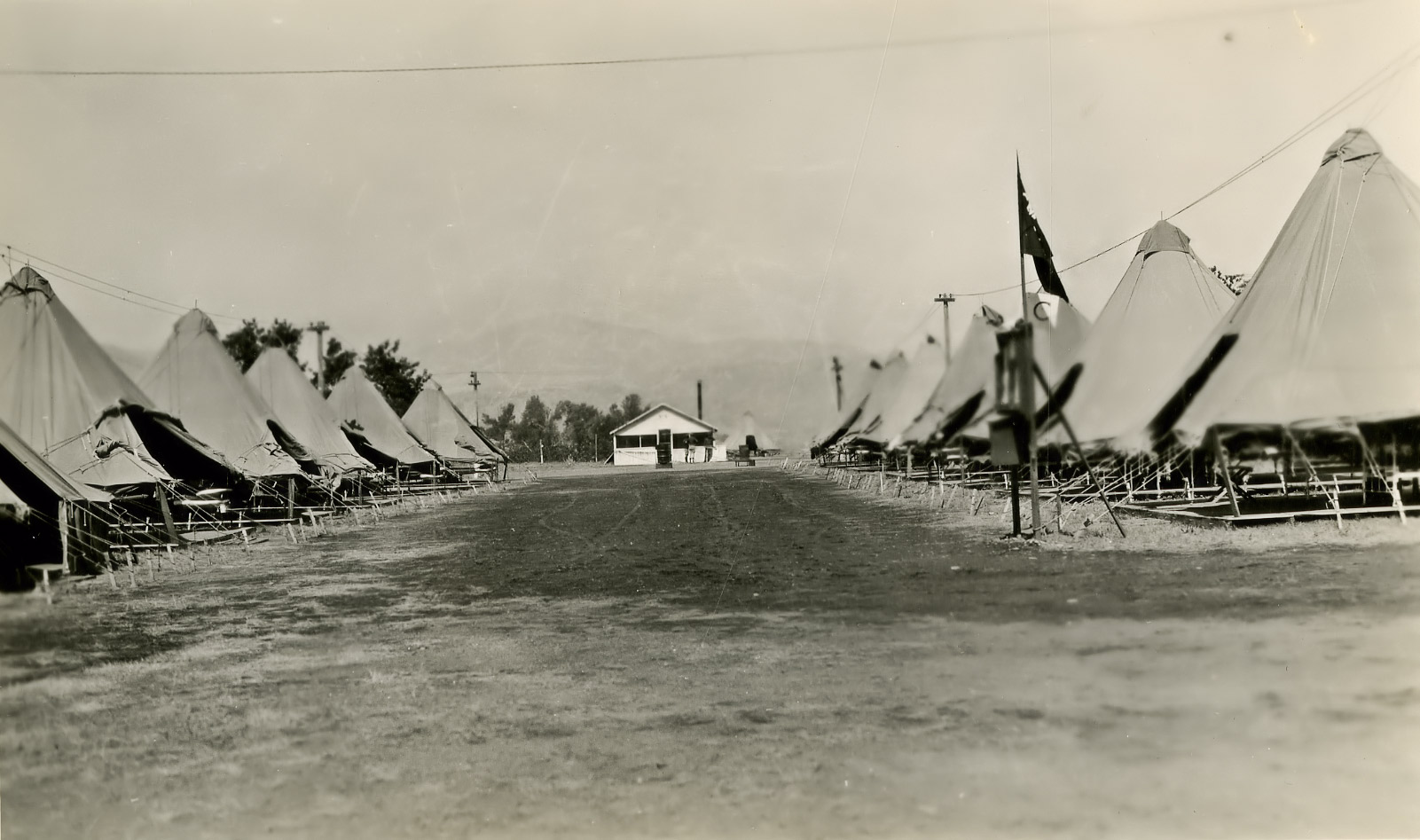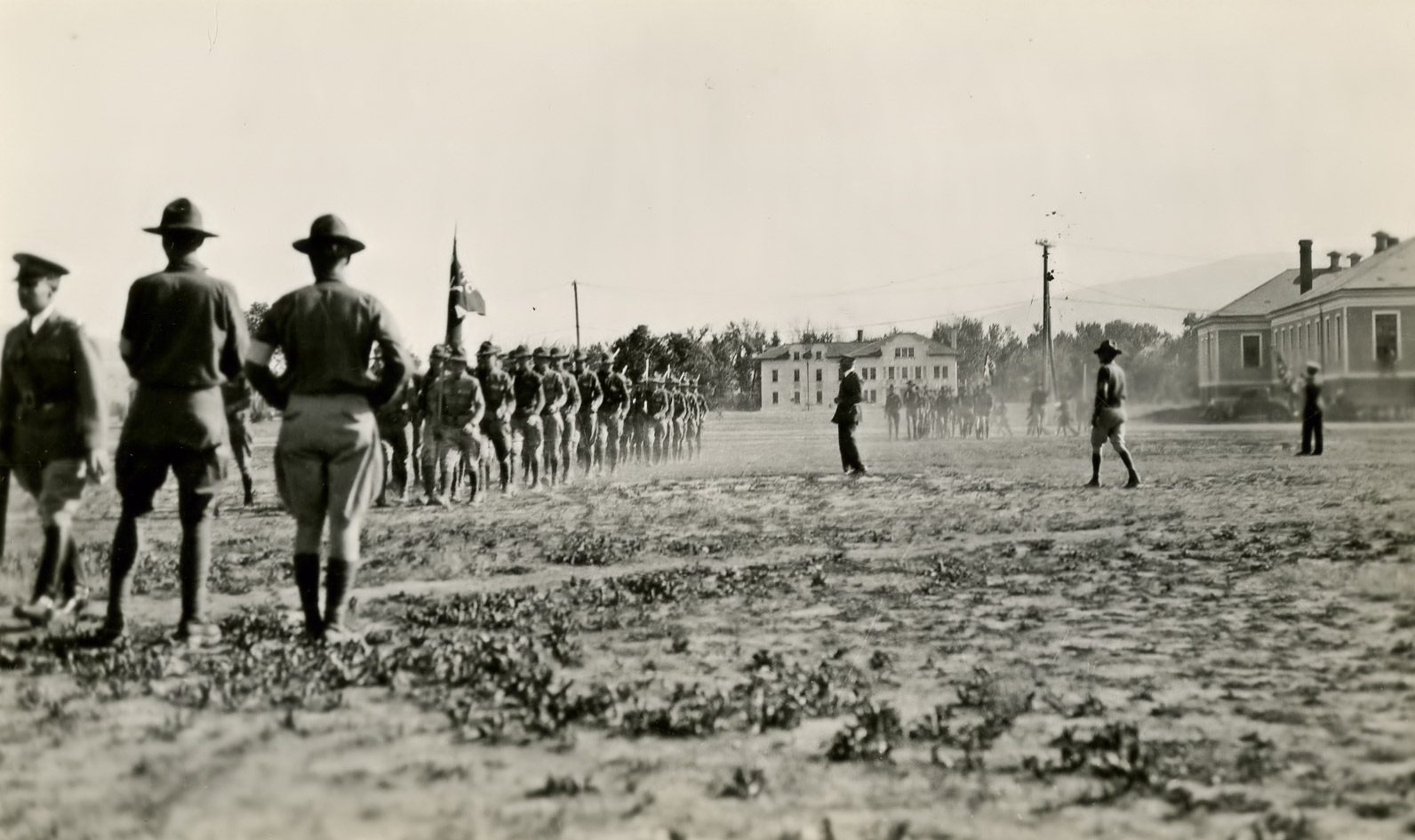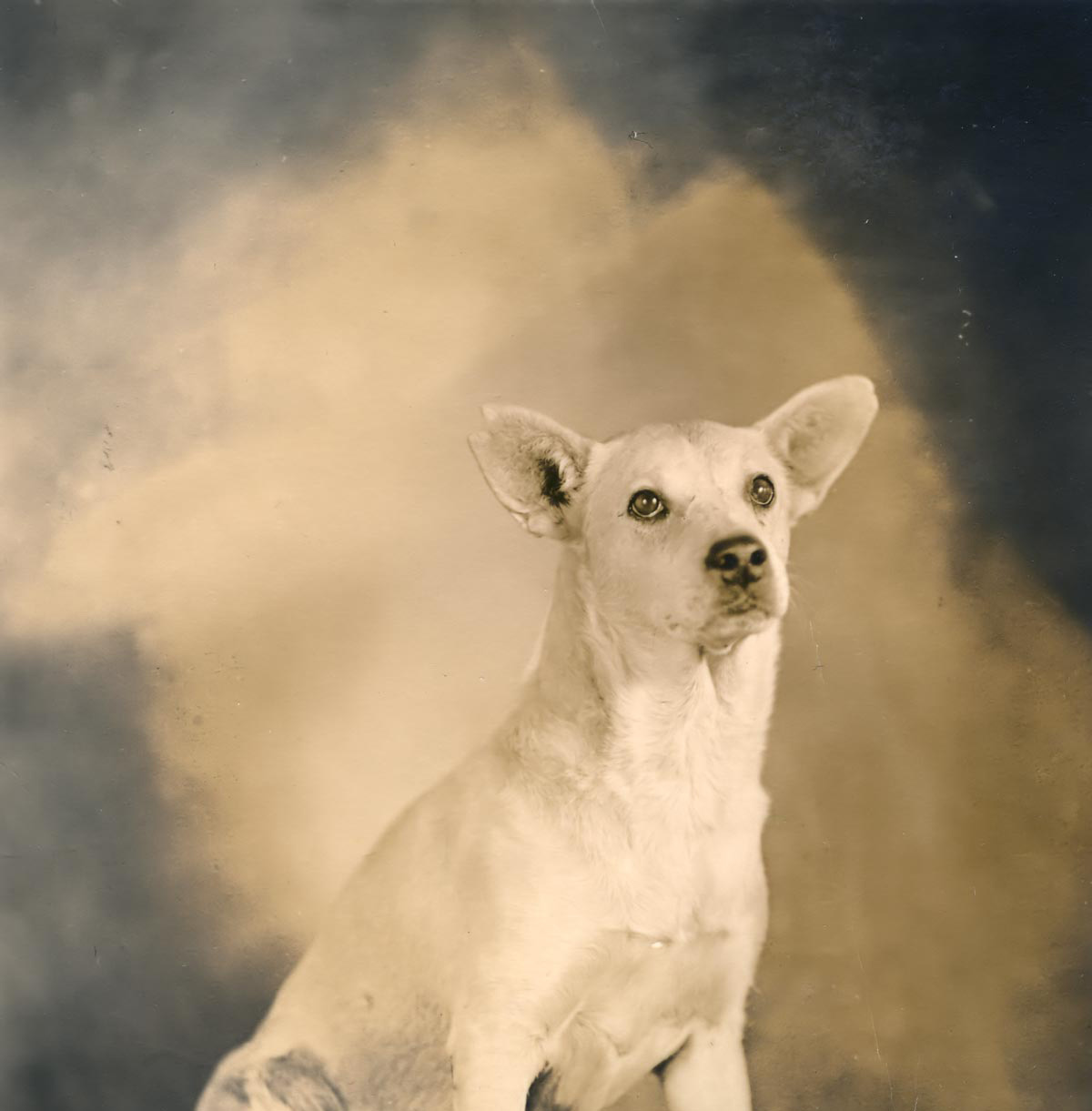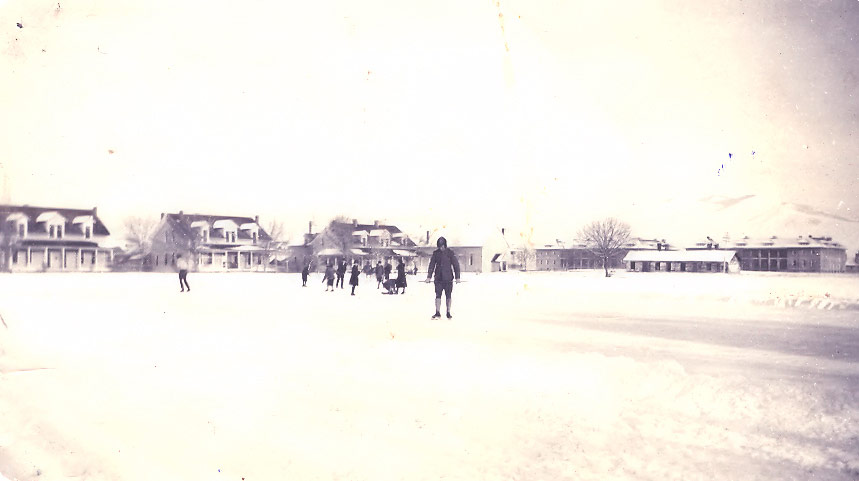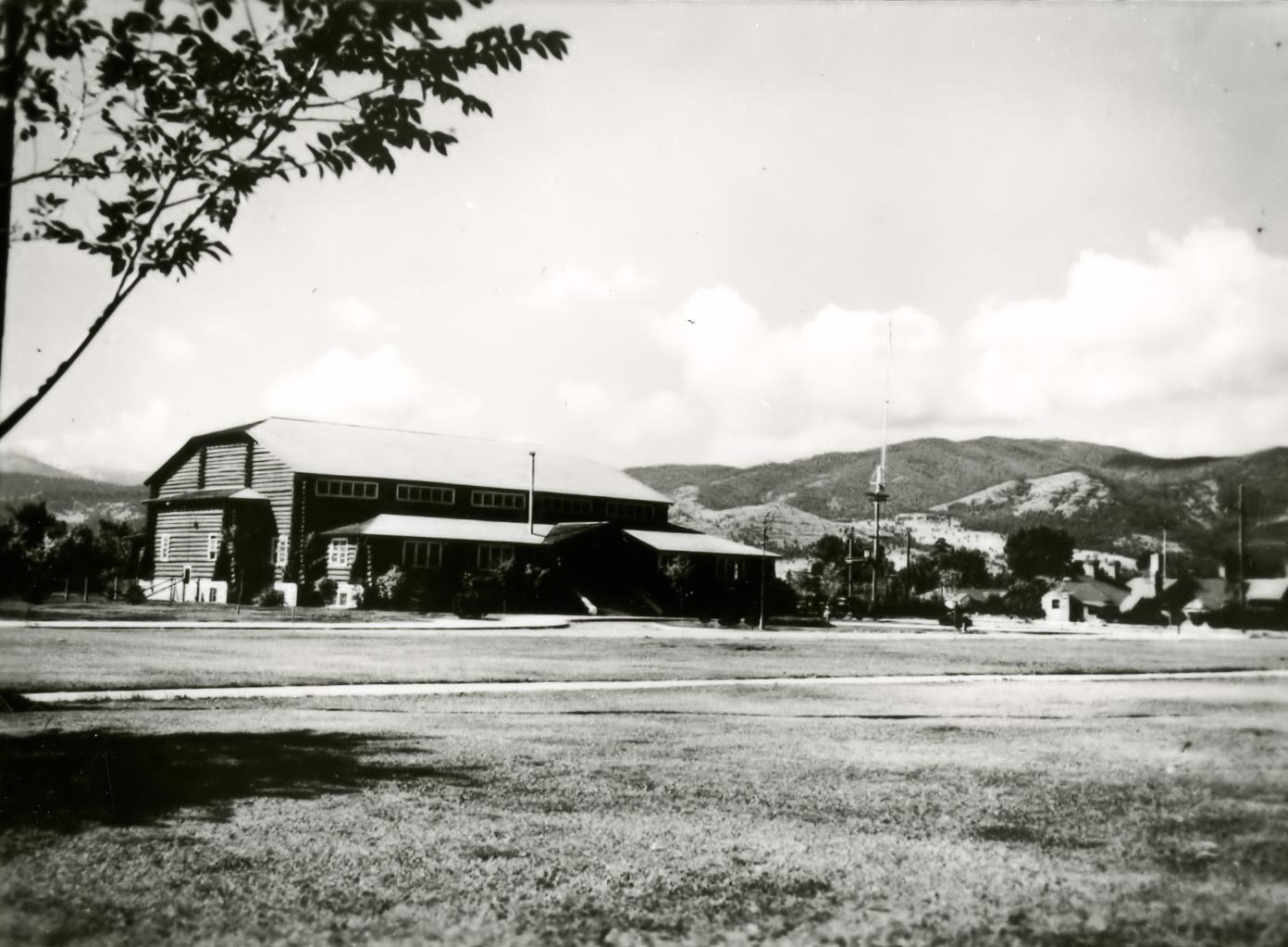The American economy reached an all time low after the stock market crash of 1929. In response, President Franklin Roosevelt established the Civilian Conservation Corps to employ young men from poor families to work on public land conservation projects. The CCC eventually employed nearly 3.5 million corpsmen in projects around the nation.
The CCC was officially established in 1933 by the Emergency Conservation Act. The Army was put in charge of the new program, and Fort Missoula was designated as the Northwest District Headquarters. Fort Missoula processed and trained over 17,000 corpsmen over the course of the Depression decade. Over 40,000 CCC men would work on projects in Montana helping to improve public access to Montana lands.
There were sixteen camps around the state where Montana worked towards resource conservation by reforesting logging areas, reversing soil erosion, building wildlife refuges, and improving visitor services in Glacier and Yellowstone national parks. During their service the Montana CCC men planted over 5.5 million trees, erected 500 small dams, and constructed 776 bridges. Other project sites included the Lewis and Clark Caverns and the Boy Scout’s Camp Paxon.
Between 1933 and 1941, Fort Missoula hosted 24 to 32 training camps per year, so adjustments needed to be made to the structures at the Fort yet again. Buildings at Fort Missoula constructed specifically for the CCC included a motor pool garage, a boiler plant, and an administrative building. Today these buildings are home to The Rocky Mountain Museum of Military History. The museum started in 1985 when Tom Wilkins of the Missoula Chamber of Commerce, approached local collectors and veterans with his desire to preserve American military history. Wilkins started the museum and served as its director until 1992.
Companies of the Fort Missoula CCC District
First hand accounts can be some of the most valuable resources for leaning about history. The leaders of the Civilian Conservation Corps understood the historic nature of their project, and asked each company to create a Pictorial Review book, a sort of yearbook that documented a company’s work life and work. Corpsmen received completed copies of these Pictorial Review books to keep, and many added their own candid photographs or solicited signatures from their friends in the company to include in their books. This database includes 25 Pictorial Review books made by companies across Montana, Idaho, and Wyoming.
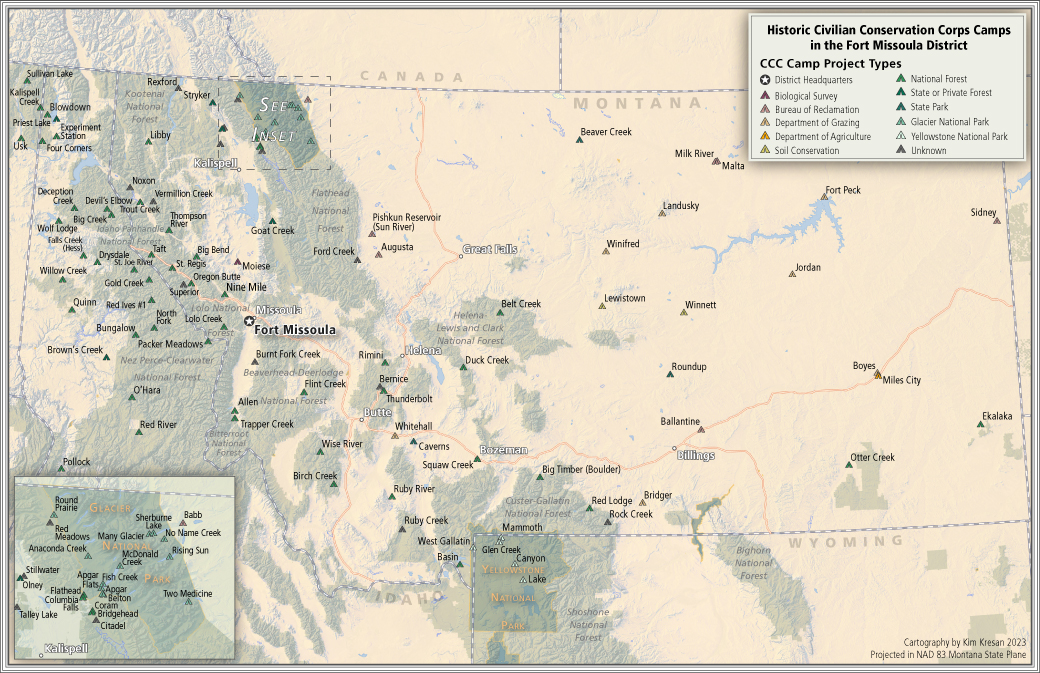
Mapping the CCC
Fort Missoula served as the headquarters for camps across Montana and into Idaho and Wyoming. Enrollees worked at with the Forest Service, Department of Grazing, Bureau of Reclamation, and Soil Conservation Service to build roads, plant trees, construct campgrounds, and string telephone lines, among many other projects. Use this interactive GIS map to see all the different CCC camps in Montana and the Fort Missoula District.

This map was created by Spring 2023 Browman Intern Kim Kresan.
Fort Missoula during the CCC era
The CCC did a lot of renovation at Fort Missoula itself. They built new buildings, restored and refurbished existing buildings, and did extensive landscaping of the grounds. In the years since the CCC disbanded, Fort Missoula has changed even more. Although many of the buildings used and built by the CCC still stand, they have been repurposed for a wide variety of different uses. Use this interactive grounds map to explore how Fort Missoula has changed since the time of the CCC.
